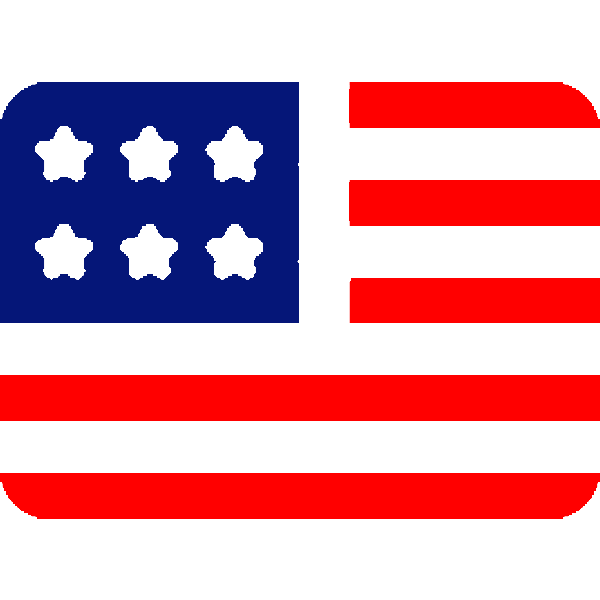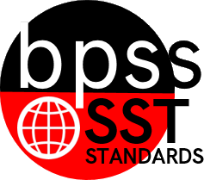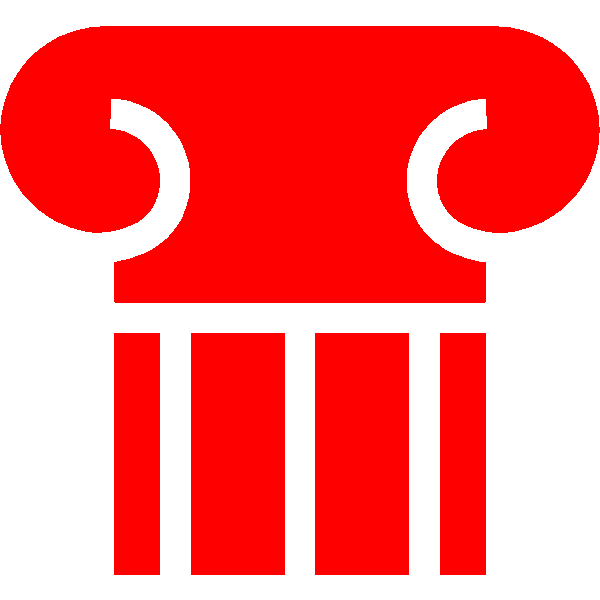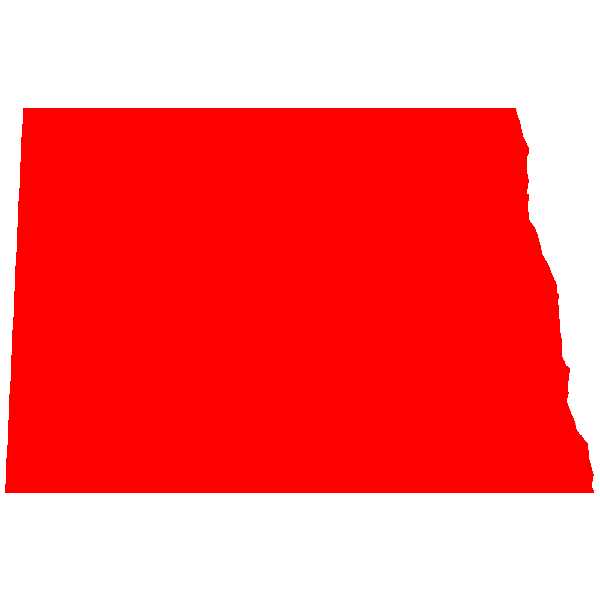History Standards
| All categories |
HISTORY (US) |
|---|
SST-HS.US_e5.b High School (SST) Social StudiesUnited States History Era 5: SST-HS.US_e5.b (2001-Present) Benchmarks
Guiding PracticeThe guiding topics for each benchmark includes various subject matter that can be used to help students reach the standard. Calculation Method for StandardsStandards are larger groups of related benchmarks. So the Standard is a calculation of all the related benchmarks. So click on the benchmark identifier below each Standards to access the learning targets and proficiency scales for each standard. | |
SST-HS.US_e5.b1 High School (SST) Social StudiesUnited States History (2001-Present) Era 5: SST-HS.US_e5.b1 Connect the changing political and social climate to United States’ involvement as a global superpower.Guiding Topics: Global topics: 9/11 attacks, United States conflict in Afghanistan, Iraq, and other Middle Eastern regions; the use of monetary, military, and diplomatic influence; involvement in international organizations (i.e., United Nations) Domestic topics: debate between domestic security and individual liberties, social and cultural impacts of domestic terrorist attacks Student Learning Targets:Knowledge Targets
Reasoning Targets
Skills (Performance) Targets
Product Targets
Proficiency ScaleThe Student can ...1 Beginning... with help, demonstrate a partial understanding of some of the simpler details and processes (Score 2.0 content) and some of the more complex ideas and processes (Score 3.0 content).
2 Developing... demonstrate no major errors or omissions regarding the simpler details and processes but exhibits major errors or omissions regarding the more complex ideas and processes (Score 3.0 content).
3 Proficient“The Standard.”... demonstrate no major errors or omissions regarding any of the information and processes that were end of instruction expectations.
4 Advanced... demonstrate in-depth inferences and applications regarding more complex material that go beyond end of instruction expectations.
ResourcesVocabulary
Websites
| |
SST-HS.US_e5.b2 High School (SST) Social StudiesUnited States History (2001-Present) Era 5: SST-HS.US_e5.b2 Explain the social, cultural, and economic impact of changes because of technology.Guiding Topics: Social media, medical advancements, career opportunities Student Learning Targets:Knowledge Targets
Reasoning Targets
Skills (Performance) Targets
Product Targets
Proficiency ScaleThe Student can ...1 Beginning... with help, demonstrate a partial understanding of some of the simpler details and processes (Score 2.0 content) and some of the more complex ideas and processes (Score 3.0 content).
2 Developing... demonstrate no major errors or omissions regarding the simpler details and processes but exhibits major errors or omissions regarding the more complex ideas and processes (Score 3.0 content).
3 Proficient“The Standard.”... demonstrate no major errors or omissions regarding any of the information and processes that were end of instruction expectations.
4 Advanced... demonstrate in-depth inferences and applications regarding more complex material that go beyond end of instruction expectations.
ResourcesVocabulary
Websites
| |
SST-HS.US_e5.b3 High School (SST) Social StudiesUnited States History (2001-Present) Era 5: SST-HS.US_e5.b3 Explain the social, political, and cultural influences on government policies regarding global immigration.Guiding Topics: Congressional debates regarding immigration and differentiate between different residency statuses (immigrant, refugee, migrant worker, asylee) Student Learning Targets:Knowledge Targets
Reasoning Targets
Skills (Performance) Targets
Product Targets
Proficiency ScaleThe Student can ...1 Beginning... with help, demonstrate a partial understanding of some of the simpler details and processes (Score 2.0 content) and some of the more complex ideas and processes (Score 3.0 content).
2 Developing... demonstrate no major errors or omissions regarding the simpler details and processes but exhibits major errors or omissions regarding the more complex ideas and processes (Score 3.0 content).
3 Proficient“The Standard.”... demonstrate no major errors or omissions regarding any of the information and processes that were end of instruction expectations.
4 Advanced... demonstrate in-depth inferences and applications regarding more complex material that go beyond end of instruction expectations.
ResourcesVocabulary
Websites
| |
HISTORY (WH) |
|---|
SST-HS.WH
HS Social StudiesWorld History Domain
DescriptionWorld history is about connections between people. Students need to understand how civilizations and cultures arose, developed, and interacted through conflict and peaceful exchange.
World history content is separated into four eras. The six standards for world history are the same for each era and are applicable to all eras of study. Benchmarks provide guidance on how to apply the standards to each era. The guiding topics column includes key topics fundamental to that era of study. It is the belief of the development committee that the guiding topics, while not required, illustrate multiple ways for students to successfully achieve the standards. World History Eras
Anchor Standards
Calculation Method for DomainsDomains are larger groups of related Standards with benchmarks. So the Domain is a calculation of all the related standards that calculate to the benchmarks. So click on the benchmark identifier below each Standards to access the learning targets and proficiency scales for each standard. | |
US ANCHOR STANDARDS |
|---|
SST-HS.US_a High School (SST) Social StudiesUnited States History SST-HS.US_a Anchor StandardsAnchor Standards
Guiding PracticeThe guiding topics for each benchmark includes various subject matter that can be used to help students reach the standard. Calculation Method for StandardsStandards are larger groups of related benchmarks. So the Standard is a calculation of all the related benchmarks. So click on the benchmark identifier below each Standards to access the learning targets and proficiency scales for each standard. | |
SST-HS.US_a.01 High School (SST) Social StudiesUnited States History Anchor StandardsSST-HS.US_a.01 Analyze primary and secondary sources with attention to reliability, impact, and purpose.Student Learning Targets:Knowledge Targets
Reasoning Targets
Skills (Performance) Targets
Product Targets
Proficiency ScaleThe Student can ...1 Beginning... with help, demonstrate a partial understanding of some of the simpler details and processes (Score 2.0 content) and some of the more complex ideas and processes (Score 3.0 content).
2 Developing... demonstrate no major errors or omissions regarding the simpler details and processes but exhibits major errors or omissions regarding the more complex ideas and processes (Score 3.0 content).
3 Proficient“The Standard.”... demonstrate no major errors or omissions regarding any of the information and processes that were end of instruction expectations.
4 Advanced... demonstrate in-depth inferences and applications regarding more complex material that go beyond end of instruction expectations.
ResourcesVocabulary
Websites
| |
SST-HS.US_a.02 High School (SST) Social StudiesUnited States History Anchor StandardsSST-HS.US_a.02 Examine the impact of multiple perspectives on social, political, and cultural development.Student Learning Targets:Knowledge Targets
Reasoning Targets
Skills (Performance) Targets
Product Targets
Proficiency ScaleThe Student can ...1 Beginning... with help, demonstrate a partial understanding of some of the simpler details and processes (Score 2.0 content) and some of the more complex ideas and processes (Score 3.0 content).
2 Developing... demonstrate no major errors or omissions regarding the simpler details and processes but exhibits major errors or omissions regarding the more complex ideas and processes (Score 3.0 content).
3 Proficient“The Standard.”... demonstrate no major errors or omissions regarding any of the information and processes that were end of instruction expectations.
4 Advanced... demonstrate in-depth inferences and applications regarding more complex material that go beyond end of instruction expectations.
ResourcesVocabulary
Websites
| |
SST-HS.US_a.03 High School (SST) Social StudiesUnited States History Anchor StandardsSST-HS.US_a.03 Explain the relationship of events focusing on the link(s) between cause and effect.Student Learning Targets:Knowledge Targets
Reasoning Targets
Skills (Performance) Targets
Product Targets
Proficiency ScaleThe Student can ...1 Beginning... with help, demonstrate a partial understanding of some of the simpler details and processes (Score 2.0 content) and some of the more complex ideas and processes (Score 3.0 content).
2 Developing... demonstrate no major errors or omissions regarding the simpler details and processes but exhibits major errors or omissions regarding the more complex ideas and processes (Score 3.0 content).
3 Proficient“The Standard.”... demonstrate no major errors or omissions regarding any of the information and processes that were end of instruction expectations.
4 Advanced... demonstrate in-depth inferences and applications regarding more complex material that go beyond end of instruction expectations.
ResourcesVocabulary
Websites
| |



